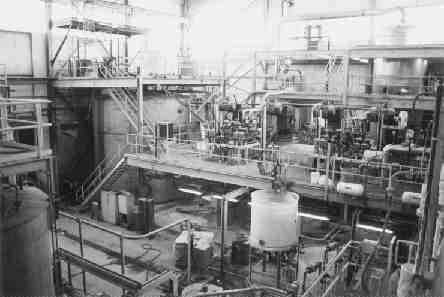Vancouver — During the first quarter,
The first quarter of 2002 saw Miramar produce 31,749 oz. gold at a cash cost of US$240 per oz. from the Con and Giant mines. Both achieved anticipated production targets, improving on last year’s combined first-quarter output of 29,177 oz. gold at a cash cost of US$262 per oz. The Con mine contributed 77,200 tonnes grading 11.5 grams gold per tonne; Giant, 17,270 tonnes at 12.13 grams gold. Ore from both mines was processed at the Con mill.
But in mid-March, the roof of the building containing the plant that produces oxygen to operate the Con autoclave collapsed. As a result, autoclave operations have been suspended. This incident does not affect the production of gold from the free-milling operations at Con, though it does affect the treatment of the refractory ore. Miramar is working with the outside oxygen supplier to repair the oxygen plant and expects the plant to be working by June. Costs are expected to exceed $2 million. In the meantime, refractory ore continues to be processed, with the concentrates stored for the second half of 2002.
The stockpiling of concentrates will result in a temporary increase in inventories and a decline in cash balances. Miramar still expects to meet its 2002 production target of 130,000 oz.
Meanwhile, plans to merge Miramar with fellow junior
Says Miramar President Anthony Walsh: “We have signed the formal merger agreement and are proceeding toward our objective of creating a larger, more liquid gold company that owns 100% of the highly prospective Hope Bay gold project.”
Under the proposed deal, Hope Bay shareholders would receive 0.263 of a Miramar share for each share tendered. Miramar’s number of shares outstanding would increase to 102.7 million. Shareholders of Hope Bay Gold are expected to vote on the transaction in late May. The approval of 66% of the shareholders is required.
Three rigs are turning on the project, and the partners plan to spend $8 million in 2002. The program will include 100 drill holes to delineate and expand the high-grade, near-surface Doris Hinge zone so that a feasibility study can be completed by year-end.
“Now that both drilling and permitting have begun at Hope Bay, we are advancing the Doris Hinge zone toward a production decision,” says Hope Bay Chief Executive Officer David Fennell. “In addition, our exploration activities provide excellent opportunities for the discovery of new gold deposits as part of our ongoing efforts to evaluate the tremendous exploration potential of the Hope Bay belt.”
Earlier this year, resources at Hope Bay were increased to 10 million tonnes grading 13.3 grams gold per tonne. The resource is spread among the Boston, Doris and Madrid deposits.
A subsequent independent scoping study on the Doris area alone concluded that the high-grade Hinge zone can support a stand-alone operation with a capital investment of $26.7 million. A stockpile of 9,000 tonnes of Boston material would expand the Hinge zone resource to the tune of 471,600 tonnes averaging 18.5 grams gold.
This year’s exploration program calls for new targets to be subjected to some 4,000 metres of diamond drilling and 2,800 metres of reverse-circulation drilling. The diamond drill is turning in the Omayok area, where alteration, folding and rock sampling indicate potential for additional mineralization. The reverse-circulation work has started in the Twin Peaks area, at the north end of the Hope Bay belt. The first target is a “Timiskaming unconformity-type” target, which may be related to an intrusive syenite stock.
A preliminary project description has been submitted to the Nunavut Water Board and the Kitikmeot Inuit Association for the development of the Doris Hinge zone. After review, the document will be forwarded the the Nunavut Impact Review Board.
“We look forward to working with all the stakeholders in seeing this project pass through the permitting process efficiently,” says Walsh. “We plan to engage the local communities and work with the various stakeholders to maximize the benefits to the local Inuit and minimize the environmental impact.”


Be the first to comment on "Miramar hits targets despite setback"